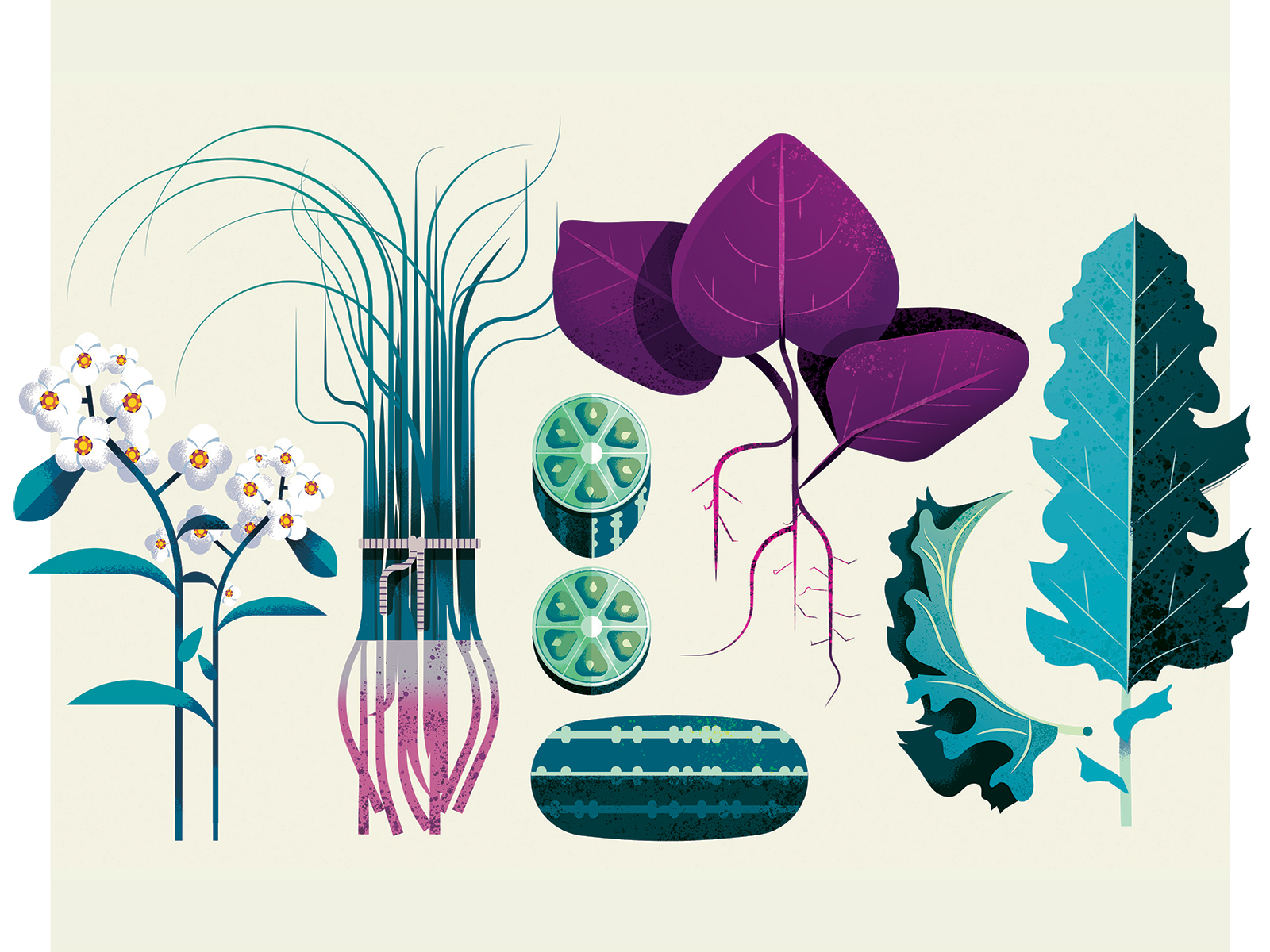The Local newsletter is your free, daily guide to life in Colorado. For locals, by locals.
Most green thumbs get a thrill from growing a perfect heirloom tomato or an ultrafresh bunch of kale. Not Mark DeRespinis. As the owner of year-old, 1.5-acre Esoterra Culinary Garden in Longmont, he reserves his excitement for lesser-seen edibles—like “celtuce,” which offers notes of buttered popcorn; “salad burnet,” a leafy herb that tastes like cucumbers; or “oxalis,” the delicate pink flowers he likens to nature’s Sour Patch Kids. For now, DeRespinis only sells his colorful fruits, vegetables, and herbs wholesale to 20-some local restaurants, but diners in the know can spot them in seasonal dishes from Denver to Boulder and beyond.
Sweet Alyssum
Scientific name: Lobularia maritima
These clusters of tiny, usually white flowers, which attract pollinators in the garden, remind DeRespinis of shooting stars. Arun Moghe, chef de cuisine at Blackbelly Market, says they taste a bit cruciferous on the front end before giving way to unctuous, sweet honey notes.
Find It: The Way Back, Blackbelly Market
Agretti
Scientific name: Salsola soda
DeRespinis’ Italian heritage drives his fascination with obscure Mediterranean plants, including this succulent shrub, also called saltwort. The leaves have a salty mineral flavor and are, according to chef Theo Adley of the Populist, “so intriguing you don’t need to do much to them.” He serves agretti raw in a lemon vinaigrette.
Find It: The Populist, Il Posto
Cucamelon
Scientific name: Melothria scabra
If the dad from Honey I Shrunk The Kids focused his ray gun on a watermelon, he’d end up with something that looks like the cucamelon. But this cucumber-y Mexican fruit’s taste is unique: “It’s like a grape that has little Nerds candies in it,” says Bar Dough executive chef Carrie Baird. “We use them in salads and even as a cocktail garnish.”
Find It: Bar Dough, Corrida
Purple Orach
Scientific name: Atriplex hortensis
With its vibrant magenta hue and wrinkled leaves, this groovy plant, sometimes called purple mountain spinach, looks like a salad green fit for a magical fairy. DeRespinis sells the meaty leaves, which have a subtle fennel flavor, solo and as part of his seasonal salad mix.
Find It: Beckon, Santo, Frasca Food and Wine
Spigarello
Scientific name: Spigariello riccia
“Kale’s great,” DeRespinis says, “but why don’t local markets carry spigarello?” You’ll be asking the same question after you taste this sweet Southern Italian brassica, which is like broccoli rabe except more tender and minus the broccoli crown. Tavernetta’s Ian Wortham says it’s “good to use in the warm months to give a lighter quality to meat dishes.”
Find It: Tavernetta, Vesta









